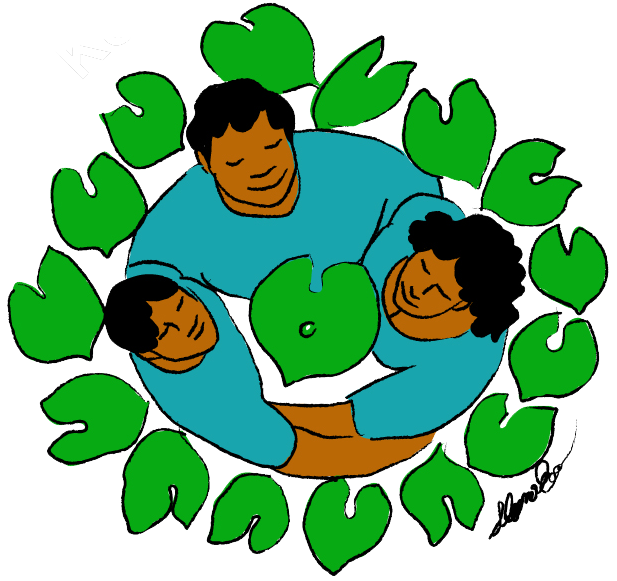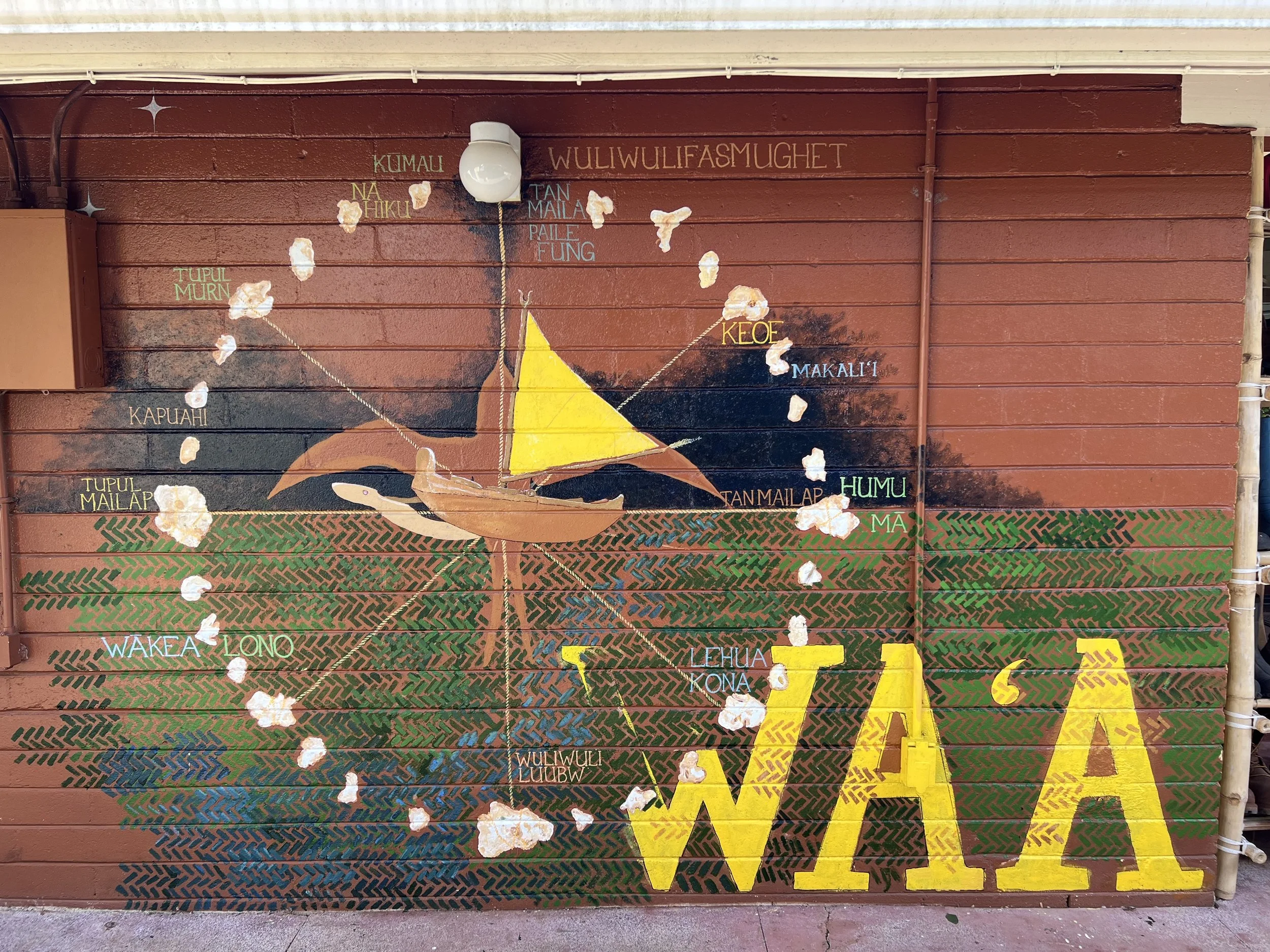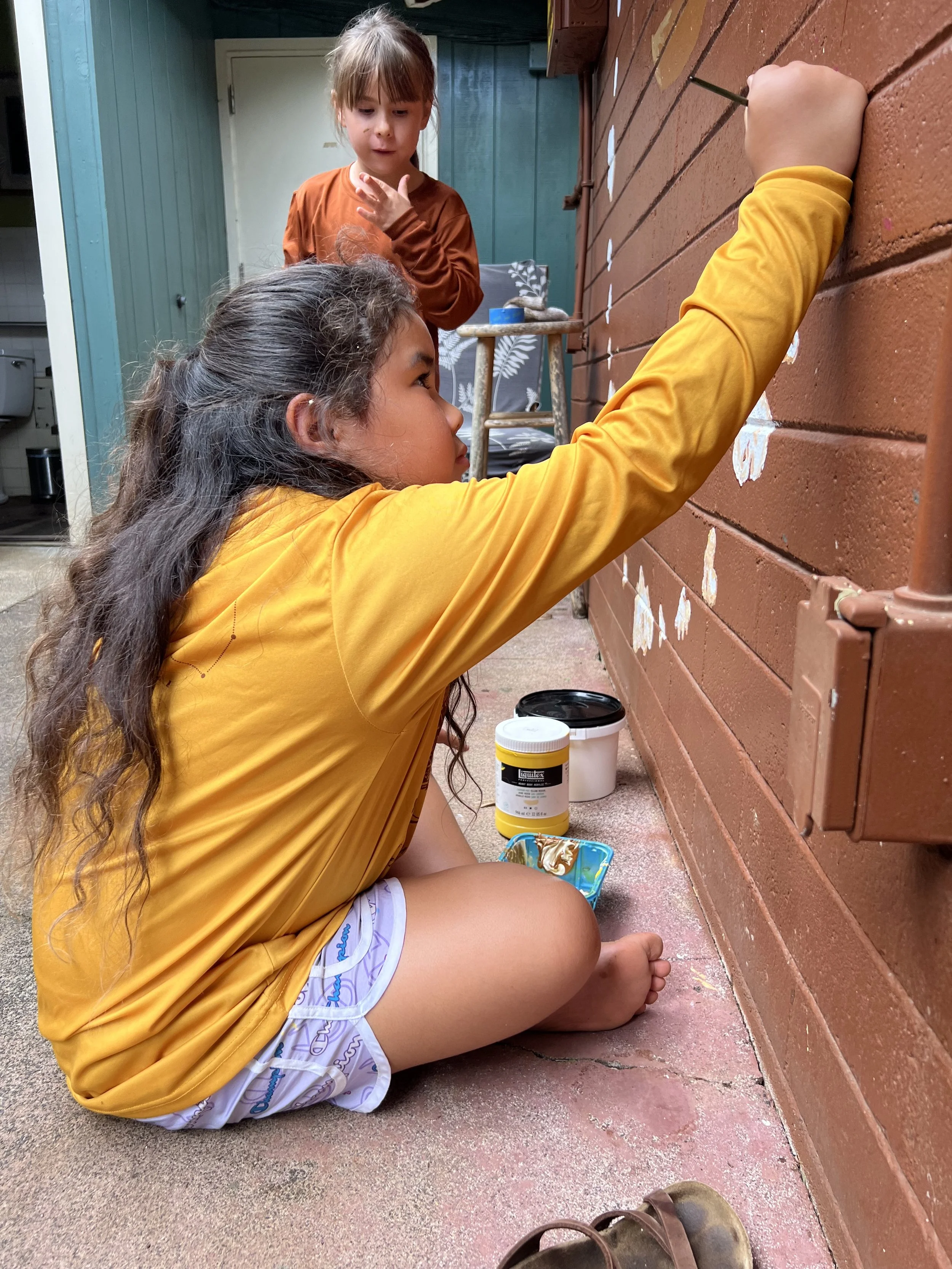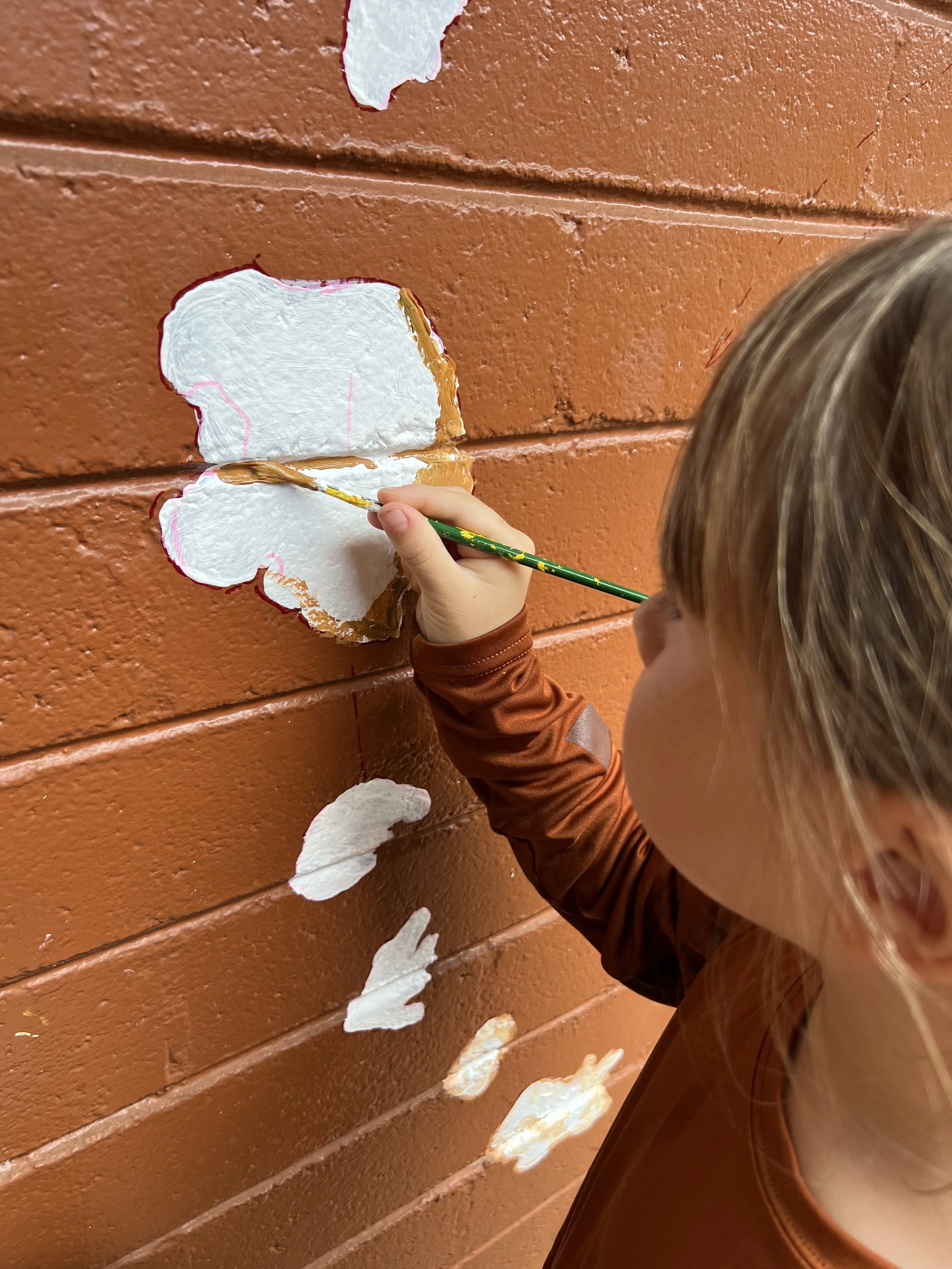New Mural at Hoʻoulu ʻĀina
A new mural featuring a star compass is now on display at Hoʻoulu ʻĀina. Photo courtesy of Kaʻōhua Lucas.
Voyaging and wayfinding are foundational pillars of Native Hawaiian culture. The same can be said for Hoʻoulu ʻĀina. Although not necessarily near the ocean, we are reminded how mauka and makai are connected through a new mural that is now on display. The beautiful artwork featuring a traditional star compass has been years in the making and helps us to remember the connection we share with our ancestors.
Little hands busy at work! Mai Uka Kuʻu Waʻa participants helped to bring the mural to life. Photo courtesy of Kaʻōhua Lucas.
About 10 years ago, master carver and kumu Plasito Piailug planted the idea of there being a star compass somewhere at Hoʻoulu ʻĀina. “They hold a lot of meaning in the Polynesian culture,” said Hale Lauele Project Manager Kanoa O’Connor, who played a big part in the mural’s creation. “Since then, it was a big dream of ours to have one here to guide us.” In 2021, Hoʻoulu ʻĀina received funding for the mural and began a 2-year journey to research and learn about star compasses. Along with Kanoa, the creative process was spearheaded by Puni Jackson, Casey Jackson, and Ikualono Jackson. The team worked to get navigation training for their staff, as well as gather community input and knowledge about star compasses. “We talked about the design for a long time,” recalled Kanoa. “We wanted to find the right place for it to live.”
Used as a tool for navigation, voyagers say star compasses are a way of remembering the position of different stars along the horizon. What makes a star compass special is that it is a mental construct, passed down through generations and teachings of wayfinding, unlike physical western compasses.
A Mai Uka Kuʻu Waʻa participant adds detail to a piece of coral in the mural. Photo courtesy of Kaʻōhua Lucas.
The central image is of a canoe carved out of an albizia tree from Hoʻoulu ʻĀina. Using this image paid respect to the carving program there. Pieces of coral surround the canoe, marking different star houses, which are sections of the horizon to indicate where a star rises and sets. “We also included the traditional Hawaiian names of some of those stars [next to the coral],” added Kanoa. The bottom half of the mural features the pattern of a woven coconut mat. And on the bottom right is the word “waʻa” written in big yellow letters. “This is a reminder of where all this comes from, the importance of the canoe,” said Kanoa. “Even though we're far from the ocean, the waʻa reminds us that mauka and makai are connected.” Countless hands went into the creation of the mural, including participants from the Mai Uka Kuʻu Waʻa Program, and volunteers and visitors to Hoʻoulu ʻĀina. “So many people just jumped in to paint, it was a lot of fun.” The mural was officially completed last summer.
The star compass is so important to Hoʻoulu ʻĀina because of its emotional and spiritual connection to our ancestors. “[During this process], I learned to establish a relationship with the stars, getting to know them like a family member,” said Kanoa. In many Polynesian cultures, stars are your ancestors in heaven. A star compass allows one to build a relationship with them as they help to guide you, no matter how rocky the waves in life can be. The Hoʻoulu ʻĀina team hopes the mural inspires people to stay connected to their ancestors, and to ask questions and not be afraid to learn more about wayfinding and navigation. “With its location, it really brightens up the space and makes it more beautiful,” said Kanoa. “Plus, it already got a lot of compliments!”







